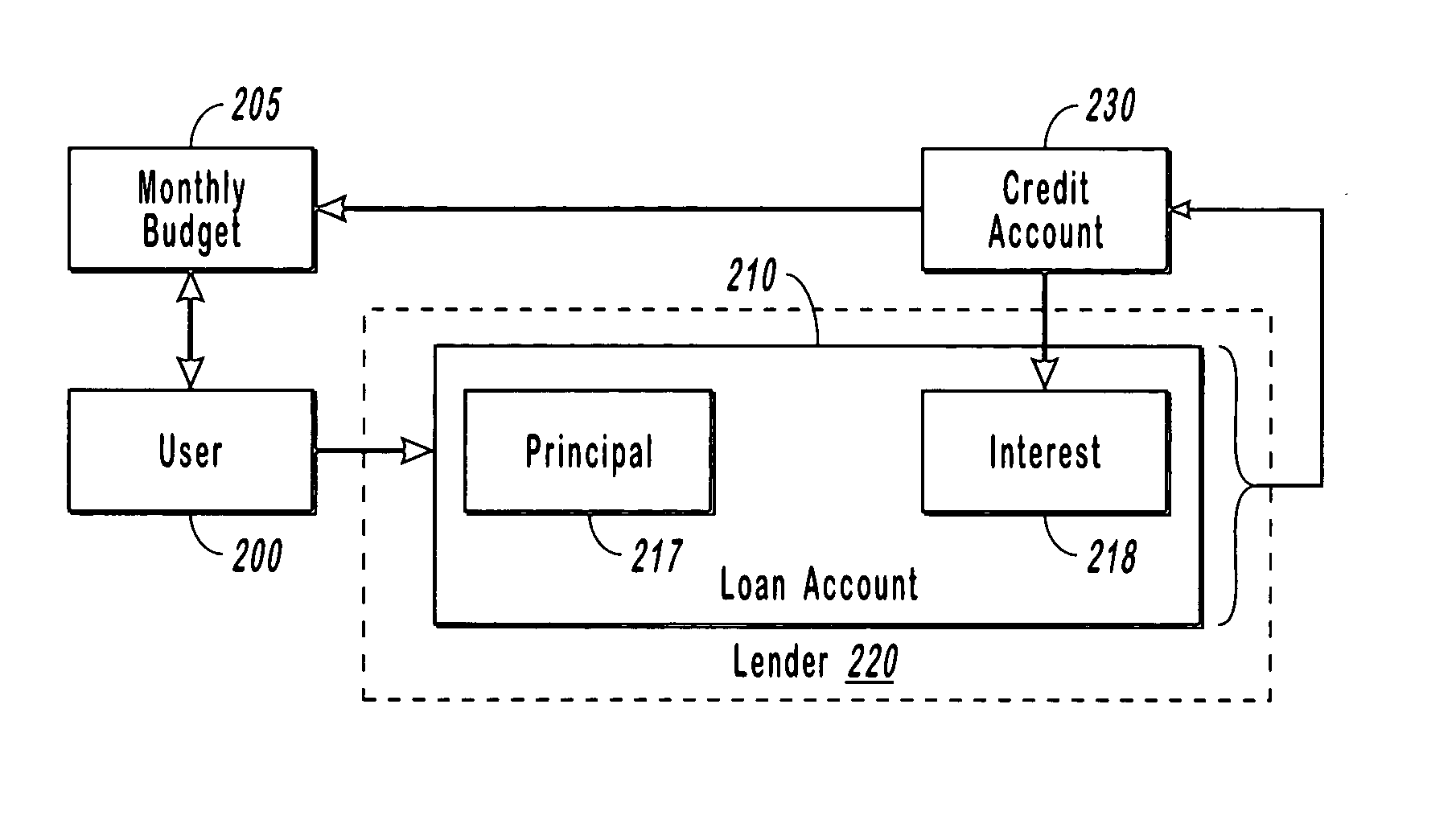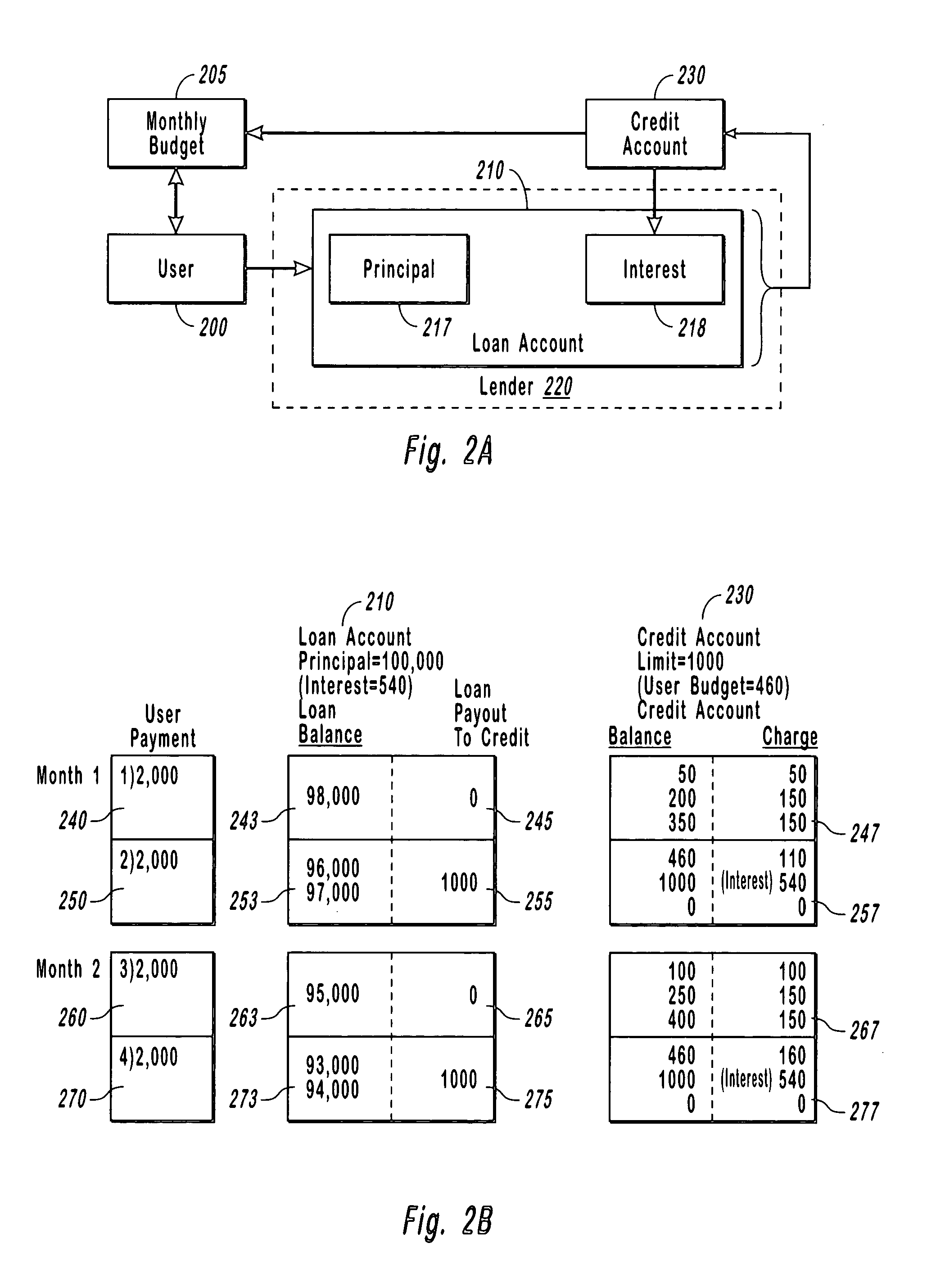System and method for paying down debt using an equity loan revolving line of credit
a technology of equity loan and revolving line of credit, which is applied in the field of systems, methods, and computer program products for debt reduction, can solve the problems of increasing debt, creating an unanticipated financial burden on the user, and increasing the problem of monetary debt, so as to maintain the effect of current monthly expenses
- Summary
- Abstract
- Description
- Claims
- Application Information
AI Technical Summary
Benefits of technology
Problems solved by technology
Method used
Image
Examples
Embodiment Construction
[0026] The present invention extends to both methods and systems that help a user pay off a large debt, such as a home debt, in less than 10-15 years, where the debt would otherwise be due in 20-30 years. In particular, implementations of the present invention allow a user to pay off a large home debt—either from the purchase of a home or from a refinance of an existing loan, including consumer debt—much quicker than otherwise possible, while allowing a user to maintain current monthly expenses.
[0027] For example, FIG. 2A illustrates an overview of a loan system in which a lender 220 provides a user 200 with one or more accounts, such as a loan account 210 and a credit account 230, which are used respectively to pay for a given item, and to help pay back the loan account 210. As used herein, a “user” will be understood as any entity, such as an individual, a couple, a small group of individuals, one or more agents, and one or more companies that obtains a loan account 210 from a le...
PUM
 Login to View More
Login to View More Abstract
Description
Claims
Application Information
 Login to View More
Login to View More - R&D
- Intellectual Property
- Life Sciences
- Materials
- Tech Scout
- Unparalleled Data Quality
- Higher Quality Content
- 60% Fewer Hallucinations
Browse by: Latest US Patents, China's latest patents, Technical Efficacy Thesaurus, Application Domain, Technology Topic, Popular Technical Reports.
© 2025 PatSnap. All rights reserved.Legal|Privacy policy|Modern Slavery Act Transparency Statement|Sitemap|About US| Contact US: help@patsnap.com



